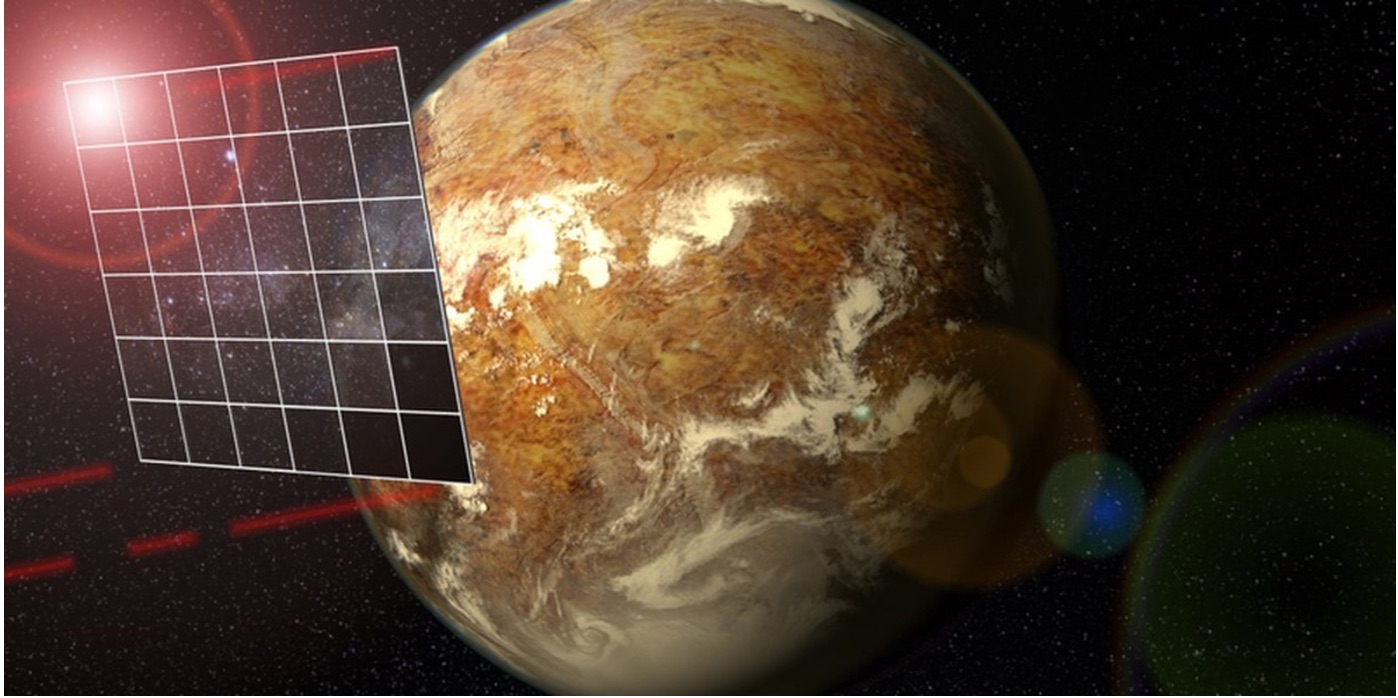
It's still unclear if a bold interstellar-flight project announced three years ago can actually work.
Breakthrough Starshot, a $100 million effort that was unveiled in April 2016, aims to accelerate tiny, sail-equipped robotic probes to tremendous speeds using an array of Earth-based lasers.
The goal is to use fleets of these "nanocraft" to explore nearby exoplanets, such as Proxima b, a potentially life-supporting world that lies just 4.2 light-years from Earth. A traditionally propelled probe would take tens of thousands of years to get to Proxima b, but at 20% the speed of light, Starshot craft could make the trip in just over 20 years.
The little camera-toting probes could do a lot of work closer to home as well. For example, they could zoom past Pluto just 3.5 days after getting their laser kick, said Avi Loeb, who chairs the advisory board for Breakthrough Starshot (as well as the astronomy department at Harvard University).
NASA's New Horizons spacecraft returned the first-ever up-close images of Pluto in July 2015, 9.5 years after launching toward the distant dwarf planet.
Related: Breakthrough Starshot in Pictures: Laser-Sailing Nanocraft to Study Alien Planets
Over the past few years, the Breakthrough Starshot team has identified about 25 potentially significant technological hurdles, Loeb said. And the assessment work is ongoing.
Get the Space.com Newsletter
Breaking space news, the latest updates on rocket launches, skywatching events and more!
"We are currently in the process of research and development, trying to figure out whether these challenges can be met," Loeb said during a talk at the The Humans to Mars Summit in Washington, D.C., earlier this month.
He laid out a few of the more notable challenges. It'll be tough, for example, to make a sail that's light enough and strong enough to do the job and that has the right shape to "ride" the laser beam in a stable fashion for the few minutes required. Producing a sufficiently coherent beam from a 100-gigawatt laser network consisting of many individual components may also prove difficult — and so might convincing the world that such a powerful instrument is safe and will never be turned to nefarious ends.
"The main challenge may be policy, because obviously, the same laser system could have other capabilities," Loeb said.
The Starshot probes will be extremely small, weighing just 1 gram (0.035 ounces) or so with bodies about the size of a postage stamp. (The sail will measure a few meters on a side.) This miniaturization allows the craft to be superfast — increase the mass, and you'll need a more powerful laser array to get them up to speed — but that small size also makes it tough to squeeze the required electronics gear on board.
Indeed, Loeb singled out an issue related to this, communication, as the one that concerns him most.
"The transmission [from the probes] cannot be very powerful, because there is [a] limited amount of power on the spacecraft," he said. "And so, the signal that will arrive at Earth will be very weak. And we're still in the process of figuring out how to deal with that. You will need a large detector, but we haven't figured out the solution as of yet."
(In case you were wondering about impacts with tiny dust grains in interstellar space — such events shouldn't be a big deal for the Starshot probes, even at 20% the speed of light. "It turns out that, with a relatively thin coating, one can protect the spacecraft from those," Loeb said. "So, it's not a significant risk.")
It's no indictment of the Breakthrough Starshot project that it doesn't have all the answers yet, of course; nobody said interstellar flight was going to be easy. And team members aren't rushing to get probes out to Proxima b or anywhere else; they're working on a 30-year plan, the first decade of which is dedicated to proof-of-concept work.
If everything goes well, Loeb said, a prototype system will be built in the second decade and the actual system will come together in decade No. 3.
- Gallery: Visions of Interstellar Starship Travel
- Building Sails for Tiny Interstellar Probes Will Be Tough — But Not Impossible
- 10 Exoplanets That Could Host Alien Life
Mike Wall's book about the search for alien life, "Out There" (Grand Central Publishing, 2018; illustrated by Karl Tate), is out now. Follow him on Twitter @michaeldwall. Follow us on Twitter @Spacedotcom or Facebook.
Join our Space Forums to keep talking space on the latest missions, night sky and more! And if you have a news tip, correction or comment, let us know at: community@space.com.

Michael Wall is a Senior Space Writer with Space.com and joined the team in 2010. He primarily covers exoplanets, spaceflight and military space, but has been known to dabble in the space art beat. His book about the search for alien life, "Out There," was published on Nov. 13, 2018. Before becoming a science writer, Michael worked as a herpetologist and wildlife biologist. He has a Ph.D. in evolutionary biology from the University of Sydney, Australia, a bachelor's degree from the University of Arizona, and a graduate certificate in science writing from the University of California, Santa Cruz. To find out what his latest project is, you can follow Michael on Twitter.
